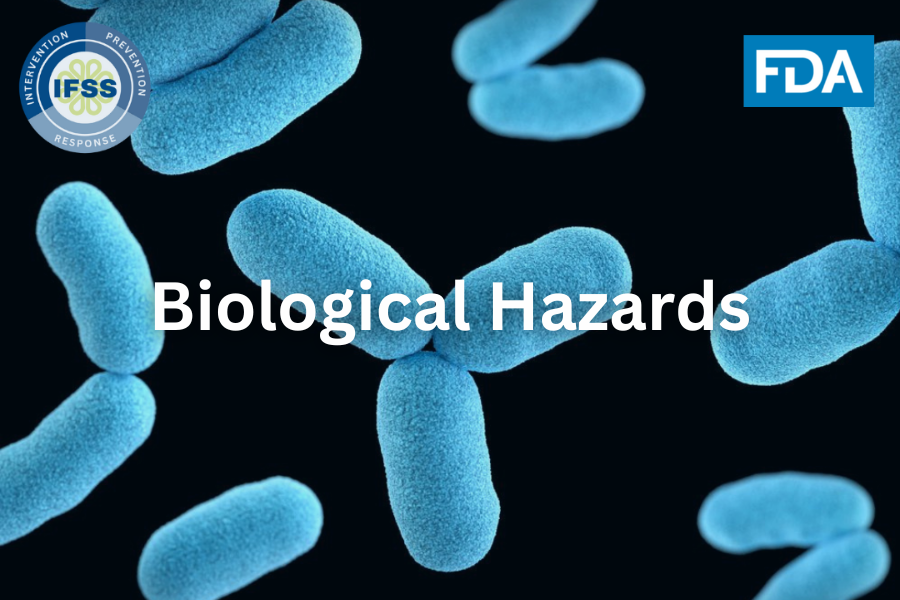IFSS Food Protection Professional NCS
Basic Core
Biological Hazards
Description: Introductory knowledge, skills, and abilities related to biological hazards, focusing on sources of contamination, growth factors, and control methods.
Topic Areas:
-
Description: Basic knowledge of bacteria, viruses, parasites, fungi, and other biological agents related to food and feed programs.
Terminal Competency:
Describe the effect of biological hazards in feed and food programs.
Enabling Competencies:
1. Define relevant terminology.
2. Describe the impact of biological hazards on food production.
3. Distinguish between pathogens and spoilage organisms.
4. Describe where to find resources.
5. Give an example of how a milestone outbreak impacted public policy.
6. Discuss how sampling is used to detect organisms of concern.
7. Give examples of illness caused by biological hazards.
To see a set of behavioral anchors, which provide further detail about the enabling competencies and can be used for assessment against the enabling competencies, contact IFPTI.
-
Description: Basic knowledge of biological hazards associated with feed or food products.
Terminal Competency: Identify biological hazards for feed and food products.
Enabling Competencies:
1. Identify categories of biological hazards.
2. Give examples of each category of biological hazard.
3. Compare characteristics of bacteria, viruses, parasites, fungi and other biological agents.
4. Associate biological hazards with products and processes.
To see a set of behavioral anchors, which provide further detail about the enabling competencies and can be used for assessment against the enabling competencies, contact IFPTI.
-
Description: Basic knowledge of the conditions which favor and inhibit growth of biological organisms.
Terminal Competency: Describe factors which contribute to the growth of biological organisms.
Enabling Competencies:
1. Differentiate between the growth factors of biological organisms.
2. Describe the effects of environmental conditions on growth.
3. Discuss how normal flora competition can inhibit pathogen growth.
To see a set of behavioral anchors, which provide further detail about the enabling competencies and can be used for assessment against the enabling competencies, contact IFPTI.
-
Description: Basic knowledge of the sources and pathways that biological hazards can take in contaminating products and processes.
Terminal Competency:
Explain how products and processes can become contaminated by biological hazards.
Enabling Competencies:
1. Discuss how biological hazards contaminate products and processes.
2. Describe vectors of contamination.
3. Give examples of food contamination sources.
4. Give examples of feed contamination sources.
5. Differentiate between direct and indirect food contact surfaces.
6. Differentiate between intentional and unintentional contamination.
To see a set of behavioral anchors, which provide further detail about the enabling competencies and can be used for assessment against the enabling competencies, contact IFPTI.
-
Description: Basic knowledge of the methods used to control biological hazards.
Terminal Competency:
Discuss methods used to control biological hazards.
Enabling Competencies:
1. Differentiate between control factors for biological hazards.
2. Explain the concept of FAT TOM to prevent the growth of biological hazards.
3. Explain the concept of “Hurdle Factors”.
4. Describe how product packaging can limit or prevent the growth of biological hazards.
5. Describe control point monitoring.
6. Give examples of organism-specific control factors.
7. Explain why source is important as a control factor.
8. Describe best management practices that are used to prevent spread of biological hazards
To see a set of behavioral anchors, which provide further detail about the enabling competencies and can be used for assessment against the enabling competencies, contact IFPTI.
Learning Resources:
Assessments:
Coming soon

